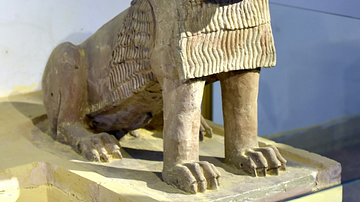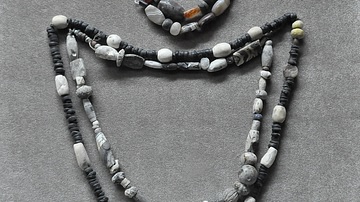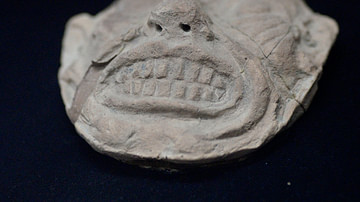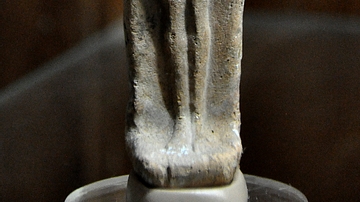Illustration
Two terracotta lions found at the entrance to the Dagan Temple at Tell Harmal (ancient Shaduppum), in the eastern outskirt of Baghdad, Old Babylonian period, c. 1800 BCE.
The temple was a typical Old-Babylonian one, with a short staircase made of mudbricks and flanked by platforms, on which those lions once stood. The lions were constructed from many fragments and probably the two lions date to different periods. The gaping jaws and bristly manes would avert any evil from entering the temple. The temple was dedicated to Nisaba (goddess of the grain and writing) and her consort, Haja. This lion (close to the viewer) was safe and intact during the ransacking of the Iraq Museum in April 2003; however, the other lion was vandalized by the looters and was restored afterwards. Both lions were made of baked and moulded clay (with a hollow interior).
The Iraq Museum, Baghdad.
About the Author
Cite This Work
APA Style
Amin, O. S. M. (2019, March 21). A Pair of Lions from Tell Harmal at the Iraq Museum. World History Encyclopedia. Retrieved from https://www.worldhistory.org/image/10275/a-pair-of-lions-from-tell-harmal-at-the-iraq-museu/
Chicago Style
Amin, Osama Shukir Muhammed. "A Pair of Lions from Tell Harmal at the Iraq Museum." World History Encyclopedia. Last modified March 21, 2019. https://www.worldhistory.org/image/10275/a-pair-of-lions-from-tell-harmal-at-the-iraq-museu/.
MLA Style
Amin, Osama Shukir Muhammed. "A Pair of Lions from Tell Harmal at the Iraq Museum." World History Encyclopedia. World History Encyclopedia, 21 Mar 2019. Web. 23 Oct 2024.








